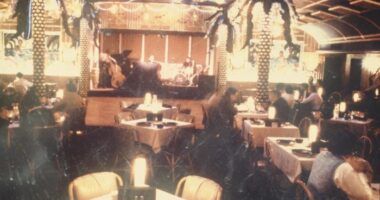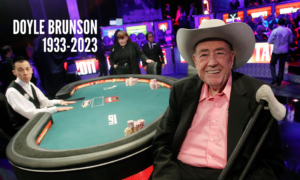
Texas, home to some of the most restrictive gambling laws in the country, has an equally-storied history of gambling.
The names and places that define this history echo in the minds and memories of lifelong Texans. And, in some cases, reverberate beyond the borders of the Lone Star State.
In this series, we look into a few of the people, places, and moments that have defined Texas’s gambling history. We hope to create a better understanding of the state’s conflicted relationship with online casinos, gambling, and the culture it creates.
In the first part of this series looking at the history of gambling in Texas, the focus was on game rooms, shootouts and mailbox bombs.
The Balinese Room
At the height of its popularity, the Balinese Room in Galveston rivaled any casino in the world for style, celebrity, and high-stakes gambling.
During its heyday, from 1942 to 1957, the Balinese regularly hosted A-List celebrities, including:
- Frank Sinatra
- Duke Ellington
- Bob Hope
- Jane Mansfield
- The Marx Brothers
- Tony Bennett
What gave the Balinese Room the gravitational pull to attract people from all over the world? The expression “fortune favors the bold” offers an insight into this glamorous part of Texas’s gambling history.
A Polynesian paradise in South Texas
The Balinese Room spanned a 600-foot pier jutting into the Gulf of Mexico. On a moonless night standing on the dark edge of town, you could look down the miles of seawall on Galveston Island and fixate on the neon lights of the Balinese shooting out to sea.
In the bustling “wide-open” entertainment center that was Galveston, the Balinese served as the hub. The place you were either going to or coming from.
Upon entering, you passed through the first of seven massive green double doors into a world of south seas sensory overload. The cool, refreshing scented air (a mix of sunscreen and old wood) flooded in through a massive cooling system.
The muted earthy tones of the woven mats and bamboo collided with the wavy tropical leaves gashing bright colors through the deep green carpet. A long hallway separated green door one from green door two. And walking down it you passed exotic fish floating like placid gemstones in huge tanks and fantastic birds chirping from their cages overhead.
Fake palms wrapped in lights, murals displaying Polynesian vistas, and chandeliers draped in crystals created moments of wonder, big and small, in the dining room. And this saturating experience continued as you walked deeper into the Balinese.
Through the dining hall, dancing hall, bar, lounge, smoking lounge, private lounge, through green doors three, four, five, six. And finally, at the far end of the pier, past the seventh green door, into the casino.
Clever design fools Rangers for years
The Balinese’s long series of adjoining halls, which was dubbed the “Ranger’s Run,” provided the gamblers and casino operators ample time to hide gaming equipment in the event of a raid.
When the Rangers showed up, the secretary at the first green door would step on a floor buzzer that signaled the backroom players to pack up and the band to strike up the tune, “The Eyes of Texas Are Upon You.”
This system left many a Ranger out of breath and wild-eyed after tearing through dining rooms and dance halls and arriving in the gambling hall only to find a few billiards tables, a bingo wheel, and a small crowd of people with school children’s innocence plastered across their faces.
The Maceo brothers
The Balinese, despite the huge draw of its world-class entertainers, existed due to the casino. And the casino existed due to the calculated risks taken by two Sicilian immigrants named Salvatore and Rosario Maceo.
Sam and Rose, as they became known, immigrated from Sicily to Louisiana to Galveston with the hopes of plying their trade as barbers. They arrived around 1910, roughly 10 years after the Galveston Flood wiped out the entire island. And a decade before the Great Depression would wipe out the country.
The Maceo brothers fell in with a flow of vice that veered strongly toward gambling and prostitution. They rose quickly to prominence, establishing a syndicate that supplied the many Galveston casinos with slot machines, gambling tables, and other start-up costs in return for a percentage of the profit.
Sam made sure to invest a good amount of their earnings back into the community. And Rose acted as enforcer, overseeing the Maceo Syndicate’s business practices and acting as an unofficial police force.
At that time, crime, aside from petty stuff, was practically non-existent. The Maceos eventually had eyes everywhere people would want to go, and their justice was swift and silent. As Frank Chalfant, author of Galveston: Island of Chance put it, under the Maceo Syndicate’s oversight “no one was killed who didn’t deserve it.”
Surviving the Prohibition Era and the Great Depression
The Maceos did so well that under their influence the combined force of the Great Depression and Prohibition could not quell the rise of the “Free State of Galveston.”
First of all, the Maceos had always taken care to pay off local police and politicians. This carried over into the Prohibition era when they made their first foray into bootlegging. With the police on their side, they were never raided by vice squads.
Second of all, the thriving underground gambling economy was all but ignored by everyone on the island due to the tremendous prosperity it brought. Galveston became something of an island apart from the impoverished mainland.
Money flowed non-stop through Maceo clubs and casinos. And their name grew until Galveston became one of the most popular sin cities in the world.
Great risk, great reward
The Balinese Room represented the culmination of the Maceos’ success. The pier that supported the Balinese had been extended from 300 to 600 feet to hold the massive club.
The 300-foot pier had itself been extended from a mere 100-foot pedestrian pier. That original foot pier was built after the Great Flood wiped out the island. Some might question why Galvestonians would erect such a feeble structure to tempt storms striking with such supreme potency.
The Maceos arrived after the Great Flood, but surely they had heard the stories from the locals who survived it. And those stories must have influenced their decision to place the star of their casino empire on the roiling Gulf waters.
The decisions of the Maceos reflect the intrepid spirit of those early Texans who took great risks and reaped great rewards. The brief run the Balinese Room had in the “wide open” stretches of Texas ended with the Post WWII transformation of the country under the constraints of conservative morality.
The Balinese Room was shut down by the Texas Rangers in 1957 and never again served as a casino. But, authorities revitalized the building, which became a restaurant and historical landmark.
Until it met its ultimate demise in 2008, during, as fate would have it, the devastation of Hurricane Ike.







